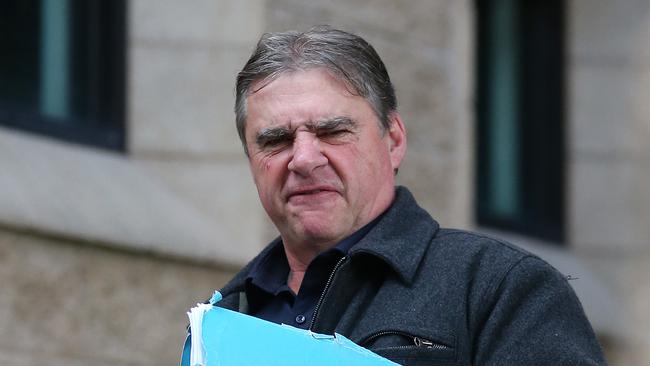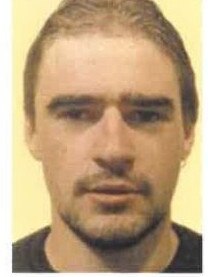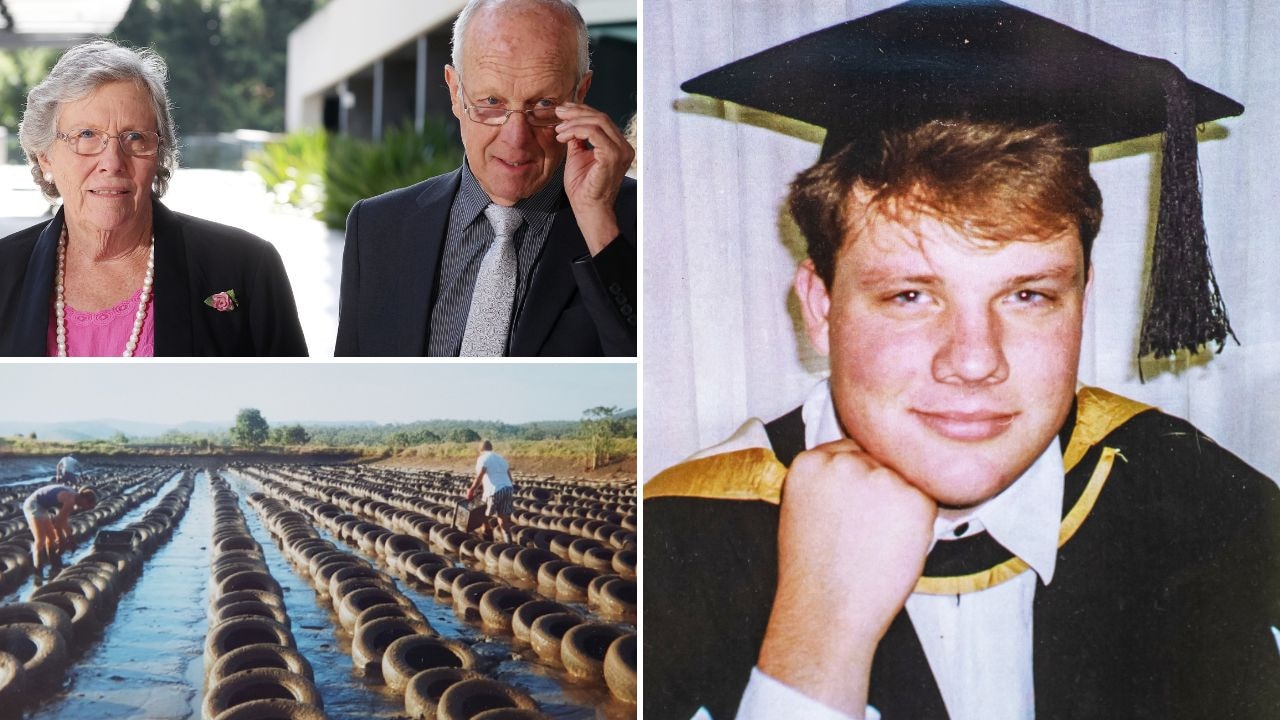Gregory Challenger trial: How the cops closed in on Lorne’s 1986 New Year’s Day rapist
For 30 years Lorne’s New Year’s Day rapist got away with his brutal crime. But the police — and the weight of evidence — eventually caught up with Gregory John Challenger.

Cold Cases
Don't miss out on the headlines from Cold Cases. Followed categories will be added to My News.
NO ONE knows what went through Gregory Challenger’s mind when he sat on his couch in Bell Post Hill watching CSI programs.
Maybe his thoughts drifted back to Lorne, 1986, and the woman he raped just hours after the new year fireworks.
Perhaps he wondered what happened to her.
It’s more likely he thought about himself; either chuckling smugly about how clever he’d been to get away with the crime, or squirming at the knowledge the cops had obtained a fresh sample of his DNA and might one day match it with evidence he’d left in Lorne.
On the day the police did come knocking he was caught off-guard, his voice jumping several octaves.
“F—king what?” he squealed when told he was to be arrested for abduction and rape.
It’s March 9, 2016, and Challenger is home alone.
His wife is out. The police have a warrant and a hidden voice recorder.
Confused, he puts the dogs outside and lets the cops in.
They explain they’re investigating a 30-year-old cold case.
“Yourself and three other men picked up a young girl who was sitting on a blanket near Erskine House, dragged her over a barbed wire fence, she was then raped by you and by another one of the three men,” the policeman says before reading him his rights
“I’ve never raped anyone. That’s what I don’t understand,” Challenger responds.
“I know you’ve probably heard that a million times, but I honestly just don’t get it.”

The police search the home for old photos of Challenger and ask casually about his memories of boys’ trips to Lorne back in the day.
While his memories are hazy, he recalls one New Year’s Eve with lots of fighting but “no sex”.
If he’d raped someone he’d remember it, he says. He even insists he’d confess the crime on the spot; if it were true.
Initially, he baulks the invitation to speculate why he’s accused of the crime, but later — without prompting — raises the DNA sample he was forced to give authorities the year before.
Why would he do that if he suspected it could make him a suspect in a cold case rape?, is the question he poses to his accusers. He watches the CSI programs. He knows DNA has a long shelf life.
Later at the Geelong Police Station, Challenger refuses to comment to formal police questions.
The chatty, helpful persona he showed police at home has apparently given way to the gravity of his predicament.
The police watch him carefully.
The accusations he faces are serious, and have come out of the blue. But his demeanour stays relatively calm.
It’s a stark contrast to how the victim responded six days earlier.

Like Challenger, she’s aged in her early 50s, and living in Geelong when the police knock on her door.
Unlike Challenger, she’s expecting the visit.
Waiting nervously.
She’s never forgotten what happened on January 1, 1986.
It’s lived in her memory every day, more prominently since the police renewed their interest in the case.
But the officer who visits her today is a stranger.
He’s tall and businesslike.
He reads a formal statement and shows her a card with 12 passport-style photos on it.
Her eyes scan the mugshots, and lock onto one man.
She turns away.
Her whole body starts shaking.
She composes herself enough to look again and drives her right index finger onto photo number five.
“It’s him. It is his eyes,” she rasps.
She turns the photo board over.
She can’t look at it any longer.
Thirty years of trauma floods her body, and she has to concentrate to breathe.
It’s a compelling identification, but is it the right man?
After ensuring the victim is OK, the policeman collects the upturned photo board and walks back to his car where he meets the detective investigating the case.
“Did she pick him?,” he asks.
“Yes,” the investigator responds.
The cops now have a positive ID to go with the strong DNA evidence.
MORE CRIME AND COURT
PUMMELLED VICTIM CAN’T RECALL ATTACK
It took 30 long years, but the law closes in on Gregory John Challenger.
A further three years passed before the matter made it to trial.
For the past three weeks the jurors filed into the Geelong County Court to hear the uncomfortable details of that pack attack in Lorne two hours into 1986.
They heard from the victim, lawyers in robes, DNA experts in lab coats and policemen in suits.
When the prosecution rested, Challenger took the stand to defend himself.
The confusion he feigned on his doorstep has become defiance.
He no longer speaks of boys trips to Lorne, and he can now recall where he was on that fateful New Year’s Eve.
Apparently, he was in South Geelong at a “gentleman’s club”.
That would appear to be a euphemism.
Two of his long-time mates follow him into the witness box.
Their alibi testimony is colourful, but fails to sway the jury.
It deliberates for a day before the judge’s tip staff knocks on their door at noon Thursday.
They enter the room and deliver the verdict. After 33 years Gregory John Challenger is found guilty of three counts of aggravated rape.
He is taken into custody and will be sentenced at a later date.
Originally published as Gregory Challenger trial: How the cops closed in on Lorne’s 1986 New Year’s Day rapist


